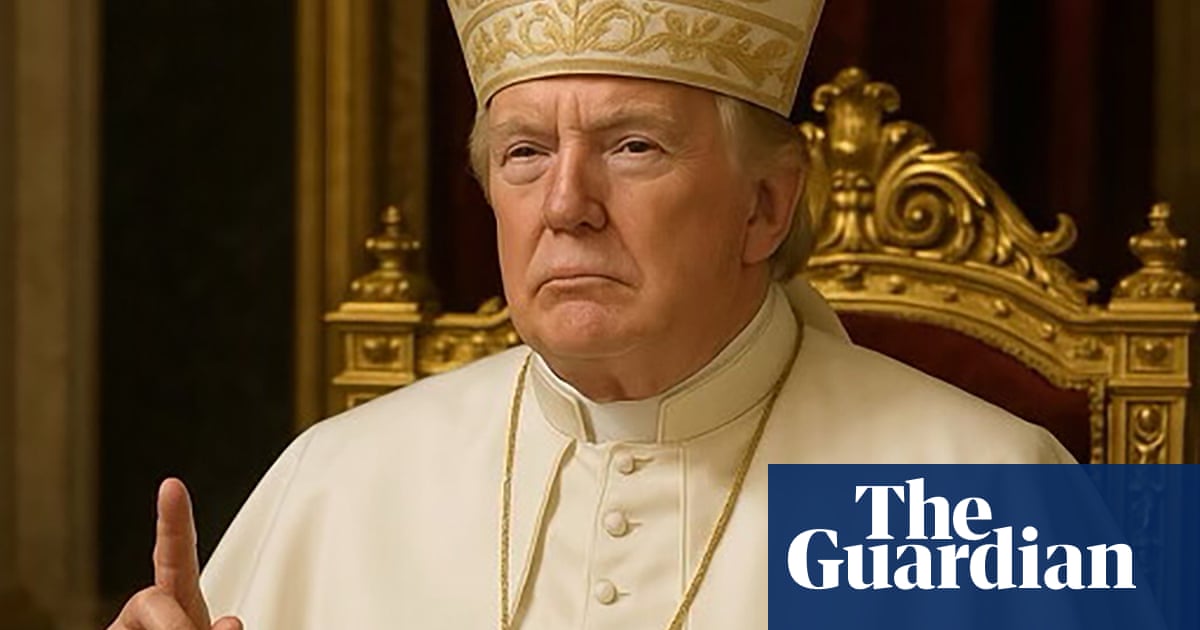Donald Trump has been accused of mocking the election of a new leader of the Catholic church after posting an artificial intelligence-generated picture of himself as the pope on social media.
The image, shared on Friday night on Trump’s Truth Social site and the White House’s official X account, raised eyebrows at the Vatican, which is still in the period of nine days of official mourning after Pope Francis’sfuneralon 26 April.
Featuring Trump in a white cassock, a gold crucifix pendant and mitre, or bishop’s hat, and with his index finger pointed towards the sky, the image was the topic of several questions during the Vatican’s daily conclave briefing on Saturday.
It came as cardinals from around the worldgathered in Rome before the conclave, the secret election process to choose a new leader of the 1.4-billion-strong Catholic church, and just days after Trump joked he would “like to be pope”.
The former Italian prime minister Matteo Renzi said the image was shameful. “This is an image that offends believers, insults institutions and shows that the leader of the rightwing world enjoys clowning around,” he wrote on X.
In the US, the New York State Catholic Conference, which represents the bishops of the state, accused Trump of mockery.
“There is nothing clever or funny about this image, Mr. President,” they wrote. “We just buried our belovedPope Francisand the cardinals are about to enter a solemn conclave to elect a new successor of St. Peter. Do not mock us.”
Italian and Spanish news reports lamented its poor taste and said it was offensive, given that the period of official mourning was still under way. Italy’s left-leaning la Repubblica also featured the image on its homepage Saturday with a commentary accusing Trump of “pathological megalomania”.
Asked to respond to the criticism, the White House press secretary, Karoline Leavitt, said Trump had “been a staunch champion for Catholics and religious liberty”.
Trump, who is not a Catholic and does not attend church regularly, attended the funeral of Pope Francis in Rome eight days ago.
The Republican senator Lindsey Graham, a close Trump ally, piled on what the New York Catholic leaders had branded mockery.
“I was excited to hear that President Trump is open to the idea of being the next Pope. This would truly be a dark horse candidate, but I would ask the papal conclave and Catholic faithful to keep an open mind about this possibility!” he wrote on X. “The first Pope-U.S. President combination has many upsides. Watching for white smoke …. Trump MMXXVIII!”
Jack Posobiec, a prominent far-right influencer and Trump ally who recently participated in a Catholic prayer event in March at Trump’s Florida resort, also defended the president.
“I’m Catholic. We’ve all been making jokes about the upcoming Pope selection all week. It’s called a sense of humour,” he wrote on X.
